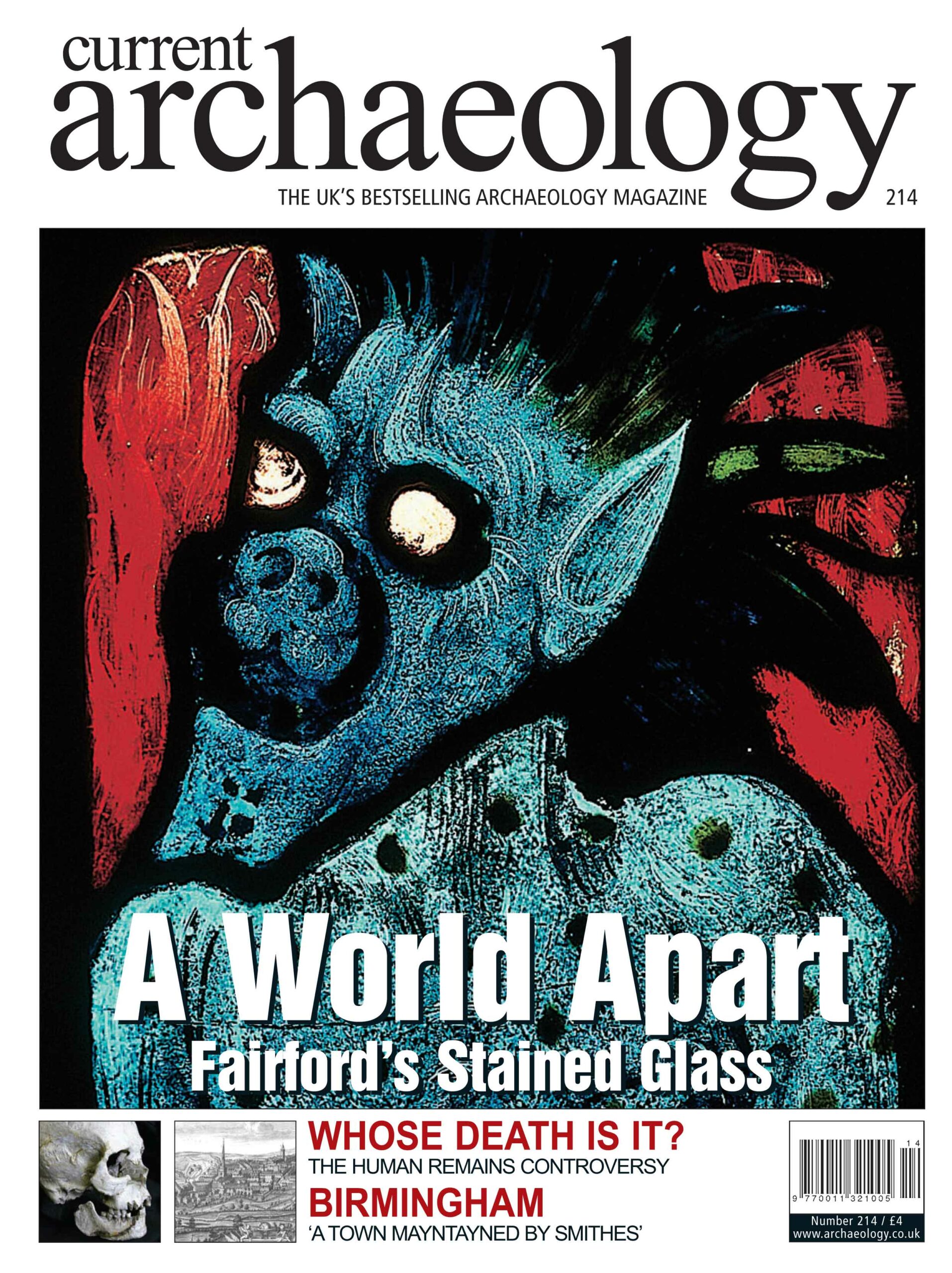The Celts loved feasting, and the communal cauldron from which the chieftains speared the ‘champion’s portion’ was central to Celtic epic. What were the 12 Iron Age cauldrons doing stacked together in a field in Wiltshire? This issue of CA tells the story. we also examine preconceived notions about the Industrial revolution: why did Birmingham suddenly emerge as Britain’s second city? in our quest for modernity, prehistory is not forgotten and we probe the mysterious properties of some Welsh henges. The need for careful consideration is nowhere more apparent than in the current debate about the treatment of human remains: what do new laws and guidance documents mean for science? Chris Catling looks at stained glass windows of Fairford’s church – the only surviving church where the medieval windows actually tell a story./n Features:/n /nBIRMINGHAM: modern redevelopment has revealed major archaeological sites, transforming our view of the Industrial Revolution./nFAIRFORD’S STAINED GLASS : the remarkable windows of St Mary’s parish church in Gloucestershire, installed between 1500-1515./nTHE CHISLEDON CAULDRONS : 12 Iron Age cauldrons discovered in a Wiltshire field./nWERE HENGES GHOST-TRAPS? : henges appear to be non-defensive ritual enclosures. Were they also supposed to trap supernatural forces?/nWHOSE DEATH IS IT ANYWAY? : how should human remains be treated?/n /nOPINION/nHuman remains: retain or return?/n /nLAST WORD/nThe Thornborough Rings: is it time to put them on the map?/n /nODDD SOCS/nThe Pew Preservation Society /n
Current Archaeology 214
In this issue:
-Birmingham: Bull Ring excavations
-Chiseldon Cauldrons
-Dyffryn Lane, Powys: henges
-Fairford’s Stained Glass
-Human remains controversy Tasmanian skeletons repatriated
Plus: News, Reviews, Comment, Diary, and more!
£6.95
Availability: 14 in stock
Description
Additional information
| Weight | 0.178 kg |
|---|---|
| Rest of World Delivery | £2 |
| Volume | Volume 18 |
| Published Year | 2000s |
| Cover Date | Jan-08 |
| Volume Name | Volume 18 Issue 10 |

